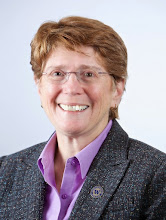Under Blakely v. Washington, 542 U.S. 296, LII link (2004), a fact that enhances a defendant's sentence must be found by a jury beyond a reasonable doubt (not found by a judge by the preponderance of the evidence). So juries will need to make many factual determinations that used to be out of their hands. How should the system respond? The issues are explored in:
J.J. Prescott & Sonja Starr, Improving Criminal Jury Decision Making After the Blakely Revolution, 2006 Ill. L. Rev. 301-356.
Here is the abstract:
The shift in sentencing fact-finding responsibility triggered in many states by Blakely v. Washington may dramatically change the complexity and type of questions that juries will be required to answer. Among the most important challenges confronting legislatures now debating the future of their sentencing regimes is whether juries are prepared to handle this new responsibility effectively - and, if not, what can be done about it. Yet neither scholars addressing the impact of Blakely nor advocates of jury reform have seriously explored these questions. Nonetheless, a number of limitations on juror decision making seriously threaten the accuracy of verdicts in systems where juries are given a more prominent role in finding sentencing facts.
In this article, we assess the capacity of juries to analyze and deliberate on sentencing-related facts. We consider, inter alia, problems of cognitive overload, frustration and loss of motivation due to complex structures, difficulties evaluating evidence that juries do not ordinarily consider, distortions due to the framing of nonbinary questions, and deliberation-related biases. We also propose a model for sentencing-stage jury proceedings that would minimize these problems. Its components include bifurcation of proceedings, partial application of the rules of evidence, special verdict forms that are carefully designed to minimize framing effects, structural simplification of sentencing tasks, a more active jury, and guidance for jurors on bias-reducing deliberation structures.

No comments:
Post a Comment